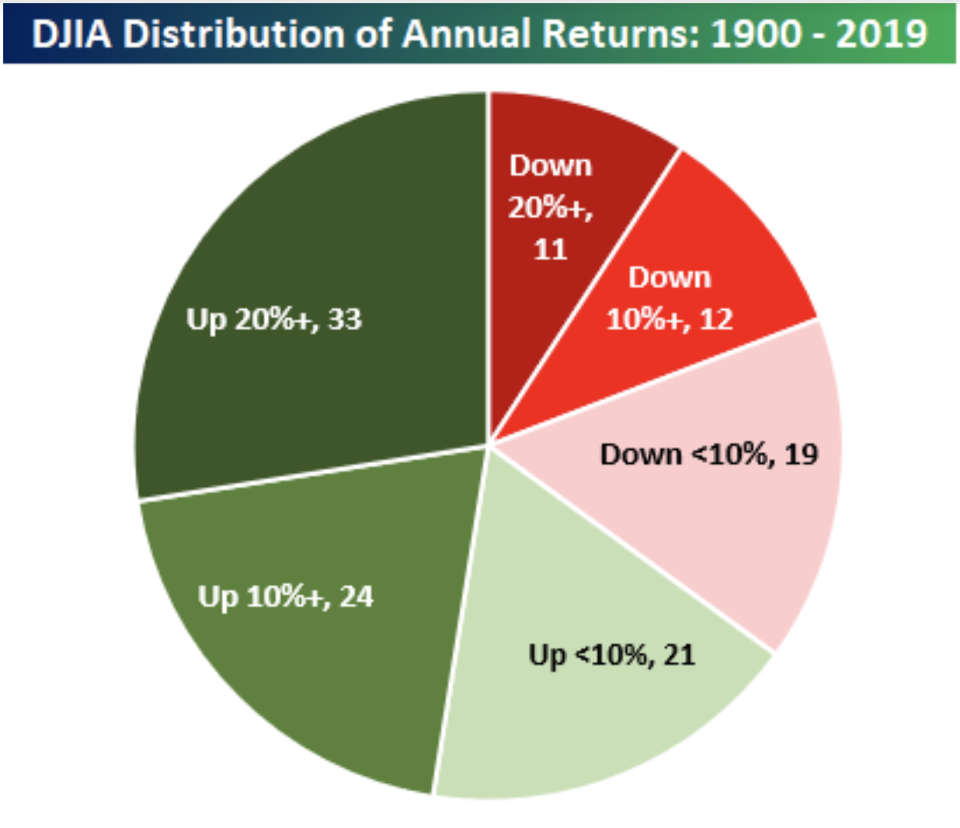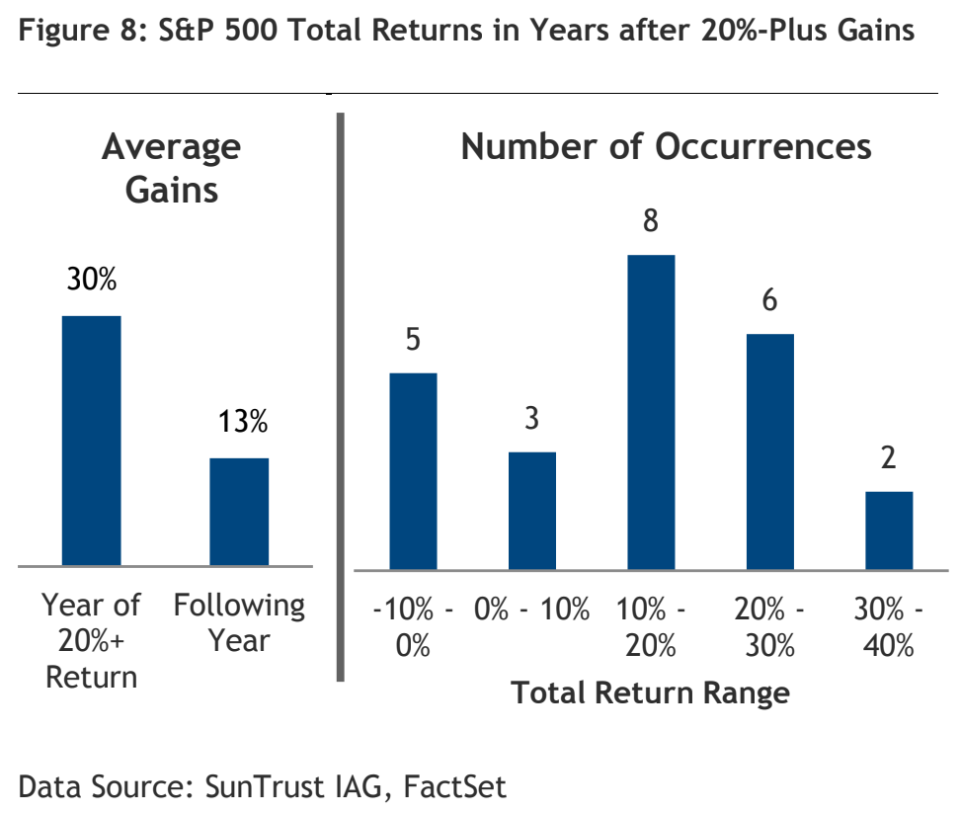Don't bet on an average year for the stock market: Morning Brief
Friday, December 20, 2019
Get the Morning Brief sent directly to your inbox every Monday to Friday by 6:30 a.m. ET. Subscribe
History is not on your side
On Thursday, the S&P 500 closed at 3,205.37, a record high. The Dow closed at 28,376.96, also a record high.
This brings the benchmark index’s year-to-date gains to 27.7%, while the Blue Chips are up 21.5%.
The tech-heavy Nasdaq outpaces both of its “big three” peers, however, logging gains north fo 33% through Thursday’s close.
And so any way you slice it, 2019 has been a tremendous year for U.S. stock market investors.
Next year, Wall Street analysts expect that the good times will keep rolling. But with a little less force.
Emily McCormick has been chronicling all of the year-ahead market calls coming out of Wall Street shops for the last month, and the broad consensus can be summarized as restrained optimism.
Piper Jaffray has a Street-high price target of 3,600 for the S&P 500 by the end of next year, implying a 12% gain based on Wednesday’s closing price. Most of the calls tracked by Yahoo Finance show expectations clustering around something like the historical average return of high-single digits that both the S&P 500 and the Dow have delivered to investors.
The problem with this forecast: returns for the stock market infrequently fall near this historical average.
In their Chart of the Day on Wednesday, the team over at Bespoke Investment Group reminded readers that the seemingly safe, conservative forecast being offered by analysts for next year will probably be wrong. And not wrong because fo some holier-than-thou Finance Twitter declaration that “all experts are wrong,” but wrong because history is just not on their side.
Looking at returns for the Dow Jones Industrial Average since 1900, Bespoke says that, “Of the 120 years shown, only 21 (17.5%) have been positive but up less than 10%,” the firm writes, citing the chart below.

Bespoke adds: “That means that over 80% of yearly returns for the DJIA since 1900 have not been in the 'safe-zone' range that's most preferred by strategists. Looking at it another way, there have actually been more years where the DJIA has been down over 10% (23 years) than there have been years where the S&P 500 was up by single-digit percentages.”
So, yes, stocks usually go up. It’s just that stocks usually go up more than single-digit percentage points.
And while a lot of the restrained optimism about the market is based off a sense that future returns have been “pulled forward,” the data don’t back up this view, however intuitive it may seem to some investors.
SunTrust strategist Keith Lerner told The Final Round on Wednesday that since World War II, the S&P 500 has gained more than 20% in a year 24 times; the following year, stocks finished higher 79% of the time (or 19 times) with the average gain totaling 13%. In 16 of those 19 years, the market gained double-digits.

By Myles Udland, reporter and co-anchor of The Final Round. Follow him @MylesUdland
What to watch today
Economy
8:30 a.m. ET: 3Q GDP, third revision (+2.1% expected, +2.1% prior print)
8:30 a.m. ET: 3Q Personal consumption (+2.9% expected, +2.9% prior print)
8:30 a.m. ET: Personal income, November (+0.3% expected, +0.0% in October)
8:30 a.m. ET: Personal spending, November (+0.4% expected, +0.3% in October)
8:30 a.m. ET: PCE deflator, November year on year (+1.4% expected, +1.3% in October)
8:30 a.m. ET: Core PCE deflator, November year on year (+1.5% expected, +1.6% in October)
10 a.m. ET: University of Michigan Survey of Consumers, December final (99.2 expected)
11 a.m. ET: Kansas City Fed Manufacturing Activity Index, December (-3 expected, -3 in November)
Earnings
Pre-market
7:00 a.m. ET: CarMax (KMX) is expected to report adjusted earnings of $1.16 per share on revenue of $4.68 billion
From Yahoo Finance
Check out our coverage of the Democratic debate:
Pete Buttigieg on free college: The 'lucky 10%' should pay their own tuition
Andrew Yang: We should focus on relocating Americans impacted by climate change
Top News

UK growth revised up slightly but still sluggish [Yahoo Finance UK]
Andrew Bailey named new Bank of England governor [Yahoo Finance UK]
Nike 2Q earnings, sales top expectations but margins, North American sales miss [Yahoo Finance]
Tesla bucks China car slump as November registrations soar [Bloomberg]
YAHOO FINANCE HIGHLIGHTS
Boeing is the worst company of the year, according to Yahoo Finance readers
Trump re-election campaign bags $5 million on impeachment day
The 5 largest IPOs of the 2010s
Follow Yahoo Finance on Twitter, Facebook, Instagram, Flipboard, SmartNews, LinkedIn, YouTube, and reddit.

